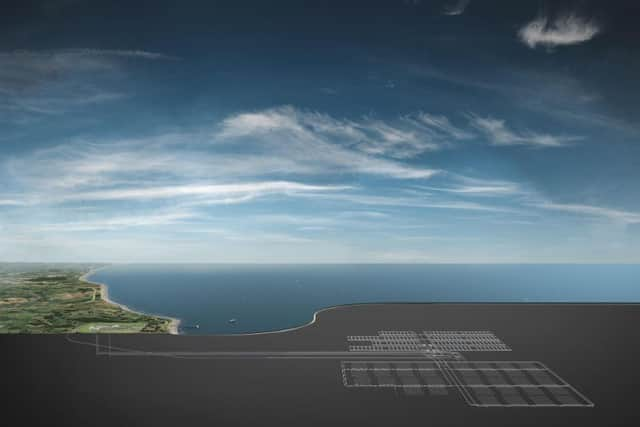Expert says risk of flooding puts Withernsea area 'out of bounds' for nuclear waste dump
South Holderness, a stretch of rapidly eroding coastline whose main town is Withernsea, was recently named as the fourth area in the UK, that could host a geological disposal facility (GDF), sparking a public outcry.
The plan would see highly toxic radioactive waste buried in specially designed and engineered vaults and tunnels hundreds of metres underground. Three other areas are being considered, two on the Cumbrian coast and another at Theddlethorpe on Lincolnshire's coast.
Advertisement
Hide AdAdvertisement
Hide AdDr Paul Dorfman, founder of the Nuclear Consulting Group, made up of 120 experts in the fields of radiation waste, nuclear policy and environmental risk, said the risk of flooding, from accelerating sea level rise and storm surges, should put the area "out of bounds and raises significant questions about why the site was chosen.”


The government says burying nuclear waste is internationally recognised by governments and scientists as "the only viable permanent solution" in the long-term. The plan would be to receive waste for 175 years before the GDF would be permanently sealed.
However Dr Dorfman, who has advised the Ministry of Defence on the dismantling of nuclear submarines, said it had not been proven that waste can really remain isolated from the environment over tens of thousands of years, adding: "The problems are changes in geology, flooding, all kinds of problems, it is unproven. You can't really call it a final solution, it is a concept.”
Computer modelling show large areas of South Holderness - as well as Hull and Goole - liable to regular flooding by 2050. Dr Dorfman said: "The key problem will be a storm surge which is basically when certain atmospheric conditions meets high tides and the sea basically ups and moves inland. What were one in 100 year flooding incidents are becoming more frequent."
Advertisement
Hide AdAdvertisement
Hide AdThe last surge in 2013 was the worst since the devastating North Sea flood of 1953 and saw Spurn Point breached.
Government agency Nuclear Waste Services said they would conduct a wide range of studies which include flood risk and climate change “over many years”. A GDF would only be built if independent regulators are satisfied. A statement said a study would be carried out “considering a range of climate change predictions for sea level rise to assess possible long-term effects on local flood risk and coastal change”. It would be designed with “appropriate mitigation measures to protect against flood risk” while operational, and once closed “the waste will be isolated hundreds of metres below the ground, far away from any flooding, coastal erosion or sea level change at the surface.”
